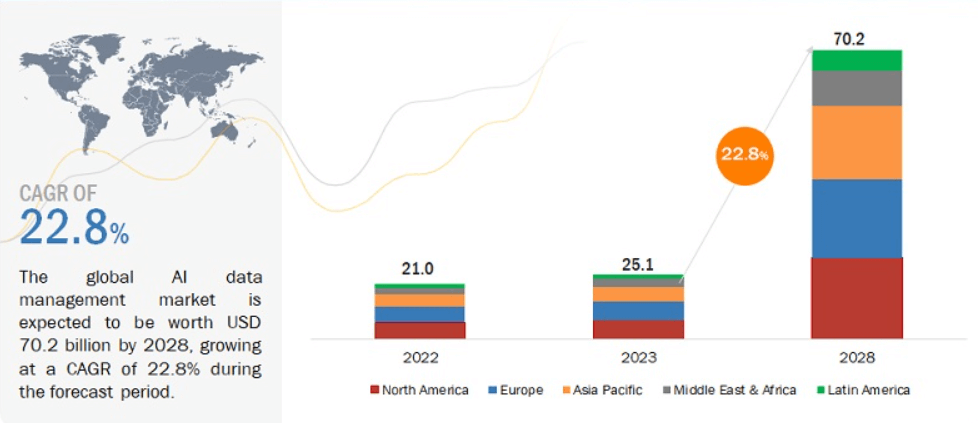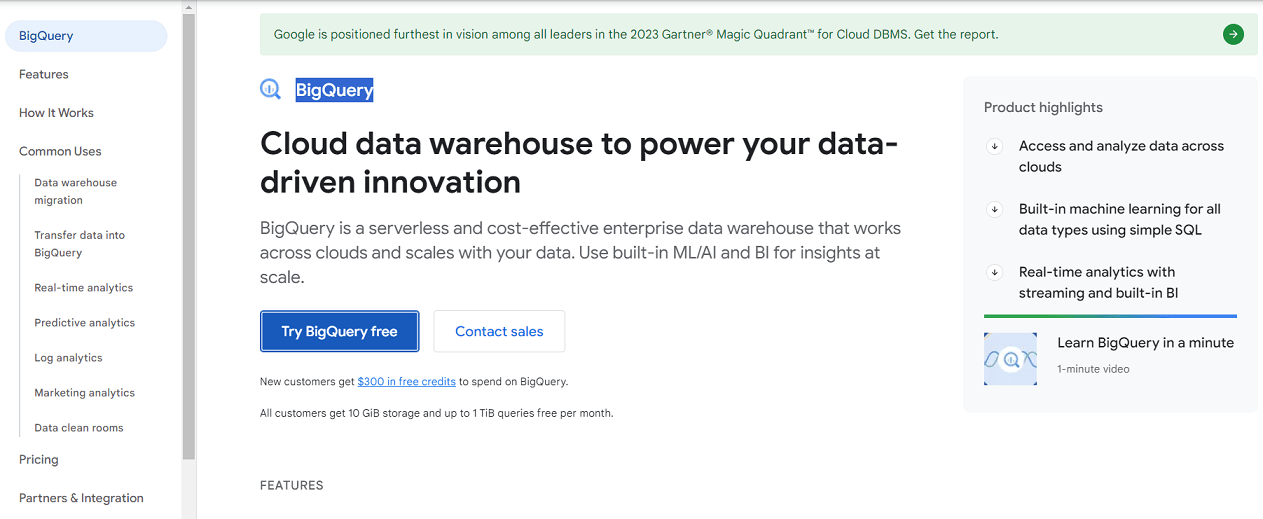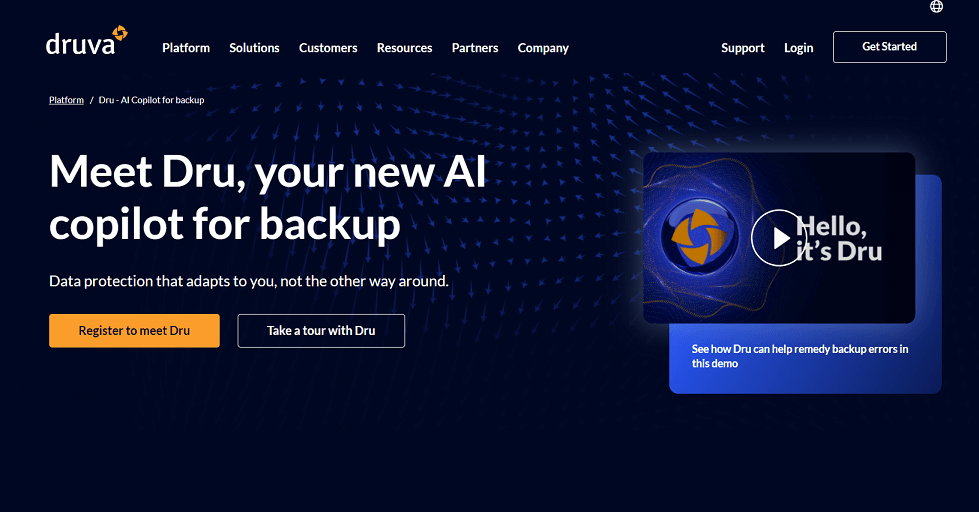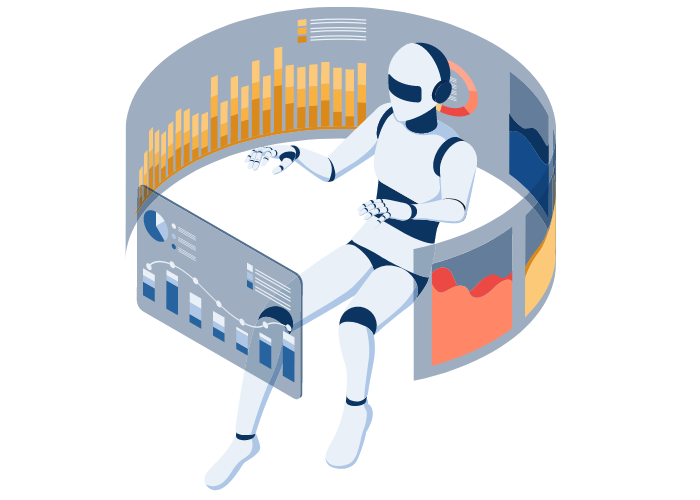⚡Quick Answer
- Data Analysis & Classification: Incorporate AI algorithms aimed at analyzing and categorizing data according to different factors, such as importance, frequency of use, and sensitivity.
- Predictive Analytics: Use AI tools, such as Google Cloud BigQuery, to examine past data and identify patterns indicating potential threats to data security.
- Automate Backups: Employ AI to automate backup tasks, minimizing manual intervention and guaranteeing timely data backups. Use tools like Druva, which uses AI to find unusual patterns and detect tricky threats in backup data.
- Continuous Improvement: Refine strategies based on AI insights and performance.
How AI Works in Backup & Recovery
AI uses special computer programs, called machine learning algorithms, to make smart decisions about your data. Think of it like a very observant robot that’s always learning.
It watches how and when data is used or if it gets lost and learns from these patterns. So, when it sees something that looks like a risk, it can act quickly to protect the important data.
🔵 Making Smart Predictions To Protect Data
With AI, you can anticipate impending data breaches or losses by discerning patterns or trends within your data records. It’s like understanding something might happen because you’ve seen similar signs before. So, it quickly backs up that data, kind of like taking safety steps when you think something bad might happen.
🔵 Scheduling Backups Without Hassle
Normally, you have to decide when to save copies of all your digital information so it doesn’t get lost. This can be a lot of work and can slow down computers. AI makes this easier, deciding on its own when to make these copies, and picking times when it won’t disturb other work.
🔵 Speeding Up Data Recovery
When data is lost, getting it back quickly is very important, especially the data that’s really needed for everyday tasks. AI helps figure out which lost data should be brought back first. It guarantees that the most important parts of the work can keep going without much delay.
Implementing AI in Backup & Recovery
Organizations depend more and more on data to run smoothly. Making sure we have strong ways to back up and recover data is really important.
The market for AI data management is growing big time, from $25.1 million in 2023 to a projected $70.2 million by 2028. This means using AI-powered solutions is super important for keeping our data safe.
AI Data Management Market Size (From 2022 to 2028)

Here are steps to implement AI in backup and recovery:
🔵 AI-Driven Data Analysis & Classification
🚀 Action: Integrate AI algorithms designed to analyze and categorize data based on various criteria, such as criticality, usage frequency, and sensitivity.
Advanced AI algorithms offer a streamlined approach to managing data. These algorithms meticulously analyze vast amounts of information, considering factors like importance, sensitivity, and relevance.
This enables users to categorize their data into different priority levels effortlessly. This strategic allocation of resources maximizes protection for critical data while optimizing backup and recovery efforts.
🎯 Purpose: Prioritize backing up important data first to optimize resource utilization and strengthen data protection.
✨ Practical example: Let’s examine a financial institution managing various types of data, such as customer transactions and internal records. With AI-driven analysis and classification, the institution can prioritize critical financial transaction data for backup and recovery.
This facilitates swift and secure recovery in case of system failures or data loss incidents. Meanwhile, less critical data like administrative documents can be assigned lower priority levels, optimizing backup resource allocation. This strategic approach not only improves data protection but also improves operational efficiency and resilience against unexpected challenges.
🔵 Predictive Analytics
🚀 Action: Use AI tools, including Google Cloud BigQuery, to sift through historical data and highlight patterns that signal potential risks to data safety.
Analyzing past data trends with AI allows tools like BigQuery to anticipate data loss risks. Taking action on these insights early helps with proactive risk management, reducing the impact of data loss and keeping operations smooth.

🎯 Purpose: Anticipate data loss risks and take proactive measures to manage them, reducing their impact on operations.
✨ Practical example: Imagine your predictive analytics reveal a concerning trend of increased hacking attempts during specific times of the year. With this insight, you can adjust your backup schedule to ensure that critical data is backed up more frequently during these vulnerable periods.
Make sure to include these predictive analytics in your backup plan. This way, you’ll have important data backed up before any problems pop up.
🔵 Automating Backup Processes With AI
🚀 Action: Deploy AI systems capable of learning from data usage and modification patterns to automate and optimize backup scheduling and execution.
AI can assist in automating your backup tasks through learning your data usage patterns and priorities. With this knowledge, AI schedules backups at optimal times, guaranteeing that important data is regularly backed up without the need for manual intervention.
🎯 Purpose: Automation guarantees that data backups occur at optimal times, reducing disruptions and maintaining current backups without manual oversight.
✨ Practical example: Imagine a marketing agency with changing workloads throughout the day. AI-powered backup systems can monitor data activity levels and identify times of reduced workload, such as during non-peak hours.
During these periods, AI automatically triggers backups, preserving essential client data without impacting ongoing projects or productivity.
🤖 Tools for Automation in Backup and Recovery
Following this, considering AI-powered tools for your backup needs can be highly beneficial.
For instance, some of the top-rated backup and recovery software solutions incorporate AI technology to improve threat detection, spot unusual patterns, and automatically detect and stop viruses.
Veritas now uses AI to detect and stop viruses automatically. Similarly, Druva employs AI to spot tricky threats, finding unusual patterns.

For further information, check this curated list of the best data recovery software ranked.
🔵 Ongoing Observation & Improvement
Just like how you get better at something with practice, AI gets smarter with more data and use. Keep an eye on how well your AI-powered backup and recovery plans are working.
Be ready to make changes if needed. As AI learns from new information and problems, it gets better at making decisions. This helps make sure your data stays safe and protected.
For instance, if you detect patterns where certain data types are consistently overlooked during backups, you can refine the AI algorithms to prioritize their protection.
Stay flexible and open to adjustments. As AI learns from new insights and encounters obstacles, it refines its decision-making abilities. This ongoing refinement process improves the reliability and security of your data over time.
⚡ Check also ➡️ AI’s Role in Strengthening Online Privacy
The Road Ahead
The use of AI in backup and recovery represents a big step forward in keeping our data safe. As AI gets better, we can expect these systems to become even smarter, making backup and recovery easier and more reliable.
Plus, bringing AI into data backup and recovery gives businesses new ways to protect their important data more accurately and with better planning.
With the right tools and approach, organizations can strengthen their defenses against data loss, assuring they can keep running smoothly in a world where data is so important.

